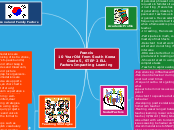Dyslexia
Developemental Dyslexia
=not so well researched
Brain not developed normally
Aquired Dyslexia (damage, i.e. Stroke)
Since the lexical route has a number of different components, there are a number of different ways in which it can be damaged so as to produce surface dyslexia, and so any two patients with surface dyslexia may have quite different patterns of damage in the lexical route. Two examples of such damage are (a) damage to entries in the Orthographic Input Lexicon and (b) damage to entries in the Phonological Output Lexicon. If the word pretty has been lost from the Orthographic Input Lexicon, it won't be recognized lexically, so will be read nonlexically and so will be regularized. If it has been lost from the Phonological Output Lexicon, it will be recognized when it is seen, but its pronunciation won't be retrieved from the Phonological Output Lexicon, so will have to be generated nonlexically - so again a regularization error will occur.
Damage
Result: Automatic: Grapheme -to- Phoneme used
Cothearts Dual Route Model
PRINT
Orthographica AnalysisDECides RECOGN. as
Irregualar: Assigned: "irregular "Lexical route
Semanitcs
Orhtografic Input Lexicon: Recognition
Orthografic Output lexicon: Pronounciation
SPEECH
Regular: Assembled: Regular Route
Grapheme (Input) to phoneme (Output) rule system
Regular Words can run both ways
Speed advantage only for low-frequency words
Shows: Surface Dyslecs: damaged lexical
Written Language Problems
3 Types
Deep
Only access to meaning
symphony as orchestra
Lion as tiger
Phonological
Unfamilar
CANNOT READ
Familar Words
CAN READ
Surface
25% Irregualar Verbs
wrong read bowl: howl
Nonsense words
85% Regular Verbs
no Problem
=Well researched









